#bobbitt worm
Explore tagged Tumblr posts
Text
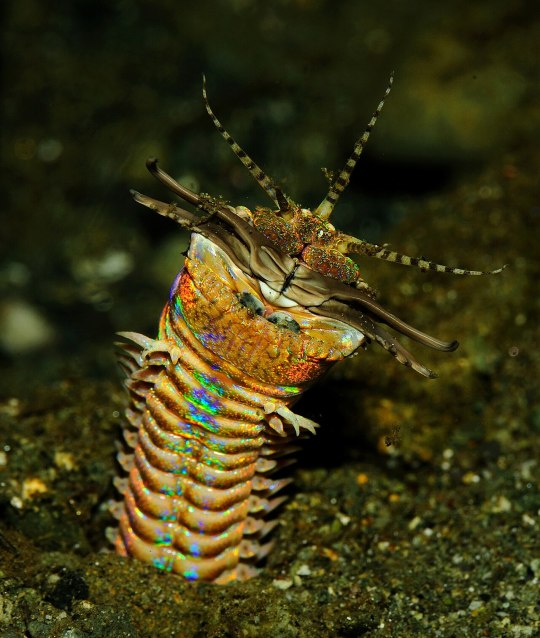
A burrowed Eunice aphroditois
601 notes
·
View notes
Text
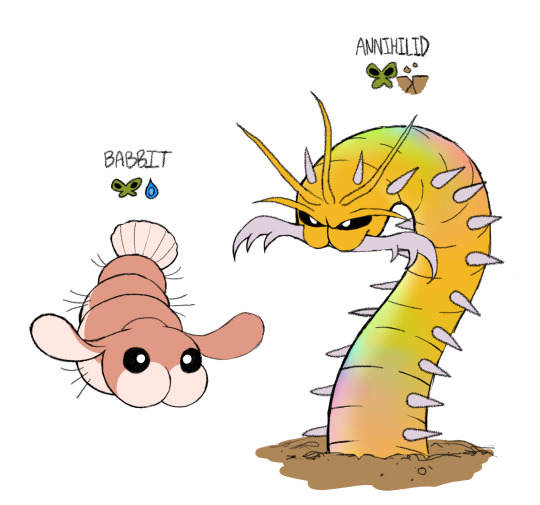

My bobbit worm Fakemon :)
Babbit is based off of the larvae and Annihilid is the adult worm!
#fakemon#pokemon#bobbit worm#Eunice aphroditois#polychaete#babbit = baby + rabbit + bobbit#annihilid = annihilate + annelid#mine#edit from 2 years later: i did not know how lorena bobbitt feels about the naming of the species so i do apologize for using the name.#i did not know surprisingly. that's what happens when you assume though.
800 notes
·
View notes
Text
How Far the Light Reaches by Sabrina Imbler
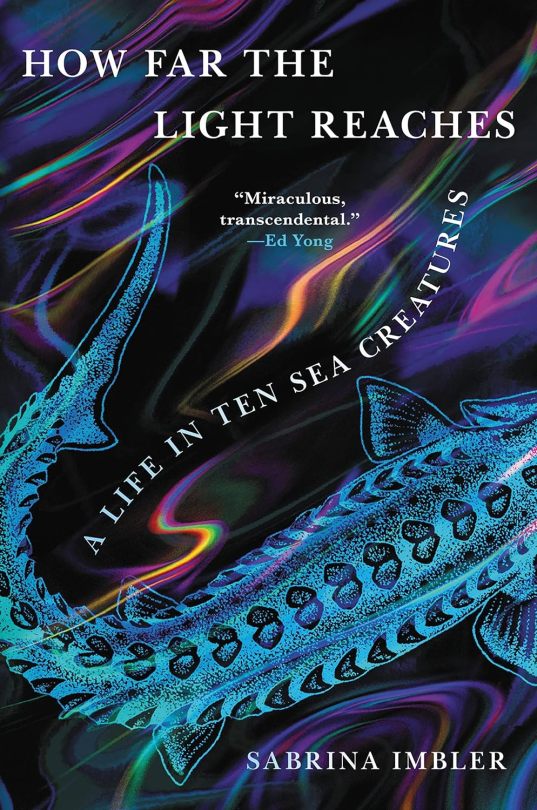
A queer, mixed race writer working in a largely white, male field, science and conservation journalist Sabrina Imbler has always been drawn to the mystery of life in the sea, and particularly to creatures living in hostile or remote environments. Each essay in their debut collection profiles one such creature, including:
the mother octopus who starves herself while watching over her eggs,
the Chinese sturgeon whose migration route has been decimated by pollution and dams,
the bizarre, predatory Bobbitt worm (named after Lorena),
the common goldfish that flourishes in the wild,
and more.
Imbler discovers that some of the most radical models of family, community, and care can be found in the sea, from gelatinous chains that are both individual organisms and colonies of clones to deep-sea crabs that have no need for the sun, nourished instead by the chemicals and heat throbbing from the core of the Earth. Exploring themes of adaptation, survival, sexuality, and care, and weaving the wonders of marine biology with stories of their own family, relationships, and coming of age, How Far the Light Reaches is a shimmering, otherworldly debut that attunes us to new visions of our world and its miracles.
#how far the light reaches#how far the light reaches: a life in ten sea creatures#sabrina imbler#nonbinary#trans book of the day#trans books#queer books#bookblr#booklr
113 notes
·
View notes
Text






Eunice aphroditois is a benthic bristle worm of warm marine waters. It lives mainly in the Atlantic Ocean, but can also be found in the Indo-Pacific. It ranges in length from less than 10 cm (4 in) to 3 m (10 ft). Its exoskeleton displays a wide range of colors, from black to purple and more. This species is an ambush predator; it hunts by burrowing its whole body in soft sediment on the ocean floor and waiting until its antennae detect prey. It then strikes with its sharp mandibles. It may also be found among coral reefs.
Eunice aphroditois is also known as the bobbit worm or bobbitt worm. The name is believed to be taken from the John and Lorena Bobbitt case; however, another proposed reason is due to its jaw. It is sometimes called the sand striker. Another name associated with them is trap-jaw worm. Traces of their burrows have been noted in 2021 to have been found among fossils near Taiwan dating back twenty
These ambush predators have five antennae on their head that are used to sense prey. The body is covered by a hard exoskeleton. The mandibles can be retracted inside the body and are responsible for striking and stunning prey; they are capable of snapping some prey in half. Typically, E. aphroditois ranges from deep purple to black, with an iridescent skin. The largest known specimen on record reached 299 centimeters (9.81 ft) in length, making it the longest known member of the polychaete class. Despite these great lengths, the worms are slim, with the body only about 25.5 millimeters (1.00 in) wide.
This species may be found prowling among the prey-rich environment of coral reefs, where its coloration allows it to blend in and its slim body enables it to hunt in tight places. It inhabits a wide range of other habitats, particularly sandy and muddy sediments, as well as around rocks and sponges. It has been recorded at depths of up to 95 meters (312 ft).
Eunice aphroditois senses passing prey with its antennae, seizes the prey with their mandibles, and drags it into its burrow. This species is not only considered to be a carnivore, feeding on a plethora of species of fish, but it can also be considered an herbivore/omnivore, feeding on algae, as well as a decomposer, feeding on dead and decaying matter.
To reduce predation risk, some fish engage in mobbing behavior, during which a group of fish will direct jets of water into the worm's burrow to disorient it.
Ancestral species may have exhibited the same hunting behavior 20 million years ago, according to fossil-records.
#deathmothblog#beauty of nature#nature#wildlife#animals#sea creatures#sea life#artists on tumblr#bobbit worm
15 notes
·
View notes
Text
Me talking about John Bobbitt: "Yeah anyways if they ever name a worm after me i hope its because it's a cool worm that everyone likes"
25 notes
·
View notes
Text
oh my GOD i just realized barbatos is a bobbitt worm


thats the same guyyyy
bobbitt worms are deep sea worms, they're 10ft/3m long, theyre long worms, but also not very big. they sit buried in the ocean floor with their jaws wide open, and when fish swim by, they jolt up and snap the two mandibles on the sides of their heads shut. their bites are very strong :3
15 notes
·
View notes
Note
Would it bother you to request cool marine facts from snorcla?
Not at all, sorry for the delay!
Whales and dolphins have hair! Mammals, of course, are described as having hair but it kind passes over some people's head that cetaceans have hair follicles as well. Some species keep them throughout their life while some lose them shortly after birth.
Horseshoe crabs are part of the Chelicerata subphylum, making them more closely related to spiders than to crabs and lobsters.
Finding underwater heat vents changed the way that energy flowed through an ecosystem. It was originally thought that an ecosystem could only get energy via the sun and the way its energy was passed through animals and plants. It was discovered that fauna living near underwater vents actually get their energy from the chemical reactions in hydrothermal vents instead.
Eunice aphroditois, a species of bristle worm, is commonly referred to as the Bobbitt worm. The worms jaws are strong enough to cut prey in half; Lorena Bobbitt severed her (at the time) husband's genitalia. The origin for the worm's name is messed up but memorable.
Males of the Pycnogonida class (commonly known as sea spiders) will carry their eggs with their ovigers. Ovigers are specialized legs that are always present in the males but typically absent in the females.
Priapulids (also called penis worms for their appearance) can be traced back to the Cambrian period. Also their existence is a total joke and that is my opinion, why do they have to look like that.. They're not actually related to worms, instead being part of superphylum Ecdysozoa (nothing special, I tell ya).
An ancestor of modern Orcas named Orcinus citoniensis is smaller than modern orcas but larger than modern dolphins. This could be where dolphins started growing larger and developed the orcinus genus.
It's believed that orcas have the strongest bite force with a force estimated to be around 19,000 psi. Crocodiles have a bite force around 3,700 psi. It's estimated that Mosasaurus had a bite force of around 13,000-16,000 psi.
Many marine species, from sharks to Teleost fish to annelids (segmented worms) and gastropods, partake in Intrauterine cannibalism. This is when the oldest/strongest offspring within the womb will cannibalize younger/weaker siblings and the ones that didn't hatch. Sand tiger sharks are the most referenced species this occurs in.
Whalefalls, in which a whale's carcass sinks to the bottom of an ocean, can sustain its own miniature ecosystem for decades.
Sharks communicate with each other, and this may be what happens when the Orca duo "Port" and "Starboard" swim near the coast of South Africa. Upon their arrival, great white sharks within the area will flee for a period of time before returning after the orcas have moved on. This duo of orcas are also famous for eating only the livers of great white sharks.
Corals and Sea Anemones are actually animals! Both animals, despite resembling flora, are actually part of the phylum Cnidaria making them related to jellyfish. Likewise, sponges are also animals. Sponges are apart of the phylum Porifera, which get their energy by filter feeding.
Phytoplankton are estimated to produce 50-80% of all oxygen in the atmosphere.
Seaweed and other marine "plants" aren't actually part of kingdom Plantae, they are instead protists. Plantae consists of "green plants", which is defined by green algae specifically and all land plants. (Learned that in Botany.)
5 notes
·
View notes
Text
Dude wtf are up with Bobbitt worms (aka sand strikers aka Eunice aphroditis)
Aphroditis cause they're so pretty and Eunice is the genus
They've been around for about 20 million years
YOU CAN CUT THEIR HEADS OFF AND THEY CAN REGENERATE
Basically, they can reproduce asexually by splitting themselves into baby bobbits.
THE LONGEST ONE WAS 9.81 FT LONG - almost a foot taller than the tallest man on earth and 4.4 taller than 5.5 feet, around the avg height.
Those pretty lil head spikies? Yeah, those are like whiskers, helping them sense you moving in the water (sucky eyesight). But their also posionus to fish and can cause paralysis if touched over and over again.

I doodled one in my trippy color art style and THAT'S JUST HOW THEY LOOK
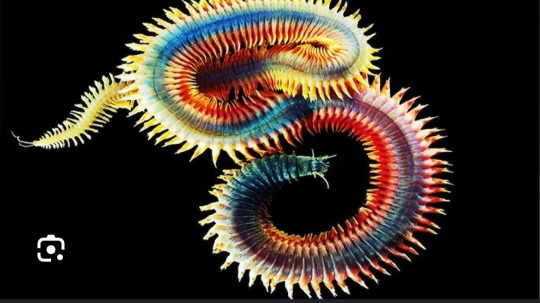
youtube
Here's a video of it eating because what the actual fuck.
The bristles on the sides of them propel them out of their holes with that amazing speed.
Also I think it's funny that this majestic beast lines the walls of it's burrow with mucus
They're like biblical angels crossed with centipedes. They're sooo pretty and deadly and I'm actually obsessed.
#Youtube#bobbit worm#sand striker#naturalist#weird creature#worm#ocean#ocean creatures#polychaete#traditional art#creature art#my art <3#yap yap yap#yapism#bobbit worms
5 notes
·
View notes
Text
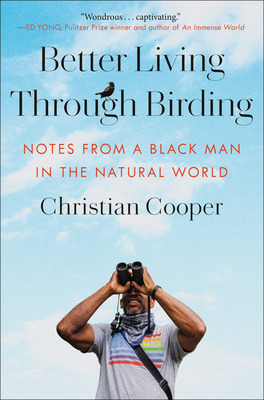
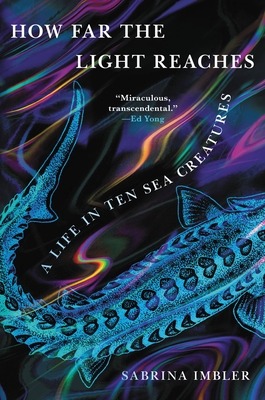

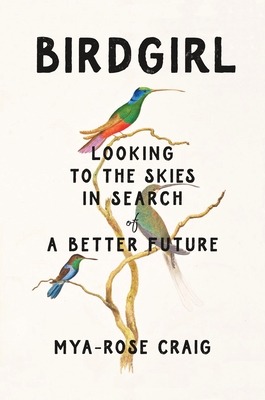
Read-Alike Friday: Better Living Through Birding by Christian Cooper
Better Living Through Birding by Christian Cooper
Christian Cooper is a self-described “Blerd” (Black nerd), an avid comics fan and expert birder who devotes every spring to gazing upon the migratory birds that stop to rest in Central Park, just a subway ride away from where he lives in New York City. While in the park one morning in May 2020, Cooper was engaged in the birdwatching ritual that had been a part of his life since he was ten years old when what might have been a routine encounter with a dog walker exploded age-old racial tensions. Cooper’s viral video of the incident would send shock waves through the nation.
In Better Living Through Birding, Cooper tells the story of his extraordinary life leading up to the now-infamous incident in Central Park and shows how a life spent looking up at the birds prepared him, in the most uncanny of ways, to be a gay, Black man in America today. From sharpened senses that work just as well at a protest as in a park to what a bird like the Common Grackle can teach us about self-acceptance, Better Living Through Birding exults in the pleasures of a life lived in pursuit of the natural world and invites you to discover them yourself.
How Far the Light Reaches by Sabrina Imbler
A queer, mixed race writer working in a largely white, male field, science and conservation journalist Sabrina Imbler has always been drawn to the mystery of life in the sea, and particularly to creatures living in hostile or remote environments. Each essay in their debut collection profiles one such creature: the mother octopus who starves herself while watching over her eggs, the Chinese sturgeon whose migration route has been decimated by pollution and dams, the bizarre Bobbitt worm (named after Lorena), and other uncanny creatures lurking in the deep ocean, far below where the light reaches. Imbler discovers that some of the most radical models of family, community, and care can be found in the sea, from gelatinous chains that are both individual organisms and colonies of clones to deep-sea crabs that have no need for the sun, nourished instead by the chemicals and heat throbbing from the core of the Earth.
Exploring themes of adaptation, survival, sexuality, and care, and weaving the wonders of marine biology with stories of their own family, relationships, and coming of age, How Far the Light Reaches is a book that invites us to envision wilder, grander, and more abundant possibilities for the way we live.
Life Between the Tides by Adam Nicolson
Inside each rockpool, tucked into one of the infinite crevices of the tidal coastline, lies a rippling, silent, unknowable universe. Below the stillness of the surface course different currents of endless motion - the ebb and flow of the tide, the steady forward propulsion of the passage of time, and the tiny lifetimes of its creatures, all of which coalesce into the grand narrative of evolution.
In Life Between the Tides, Adam Nicolson investigates one of the most revelatory habitats on earth. As Nicolson journeys between the tides, both in the pools he builds along the coast of Scotland and through the timeline of scientific discovery, he is accompanied by great thinkers - no one can escape the pull of the sea. We meet Virginia Woolf and her Waves; a young T. S. Eliot peering into his own rockpool in Massachusetts; even Nicolson's father-in-law, a classical scholar who would hunt for amethysts along the shoreline, his mind on Heraclitus and the Hellenists. And, of course, scientists populate the pages; not only their discoveries, but also their doubts and errors, their moments of quiet observation and their thrilling realizations.
It is all within the rockpools, where you can look beyond your own reflection and find the miraculous an inch beneath your nose. "The soul wants to be wet," Heraclitus said in Ephesus twenty-five hundred years ago. This marvelous book demonstrates why it is so.
Birdgirl by Mya-Rose Craig
Meet Mya-Rose – otherwise known as ‘Birdgirl’. Birder, environmentalist, diversity activist. To date she has seen over five thousand different types of bird: half the world’s species.
Every single bird a treasure. Each sighting a small step in her family journey – a collective moment of joy and stillness amidst her mother’s deepening mental health crisis. And each helping her to find her voice.
Since she was young, she has visited every continent to pursue her passion, seeing first-hand the inequality and reckless destruction we are inflicting on our fragile planet. And the simple, mindful act of looking for birds has made her ever-more determined to campaign for all our survival.
This is her story; a journey defined by her love for these extraordinary creatures. Because large or small, brown, patterned or jewelled, there is something about birds that makes us, even for just moments at a time, lift our eyes away from our lives and up to the skies.
#memoir#science#nature#nonfiction#reading recommendations#reading recs#book recommendations#book recs#library books#tbr#tbr pile#to read#booklr#book tumblr#book blog#library blog#readers advisory
12 notes
·
View notes
Note
Silly Game Time: Change one letter of a media title, and tell us what that different media would be about.
For example, "Taken" (a movie where Liam Neeson seeks bloody vengeance against the men who kidnapped his adult daughter) becomes "Waken" (a movie where Liam Neeson seeks bloody vengeance against the men who woke up his baby daughter).
The Hobbit to The Bobbit. Bobbitt worms are just little guys! I'd put a photo of them here but uh. They're considered as an inspiration to the Alien movie's aliens for a reason but leaning more towards centipedes and millipedes. Honestly they're kind of adorable in the sense of "you're cute in the glass tank but come near me and I will have no hesitation on enacting Darwinism on you"
Oh gods the marine biology obsession is infectious, ruN FOR YOUR SANITY!!!
3 notes
·
View notes
Note
Silly Game Time: COMPLETE THE PHRASE! "This month is named April because it's the only month with a pril. For those who don't know, a pril is ___."
A Bobbitt worm!
1 note
·
View note
Text
had a bubble bath for the first time in months but as soon as i got in and laid down, i felt a tickle on my toe and panicked because i was convinced it was 100000 marine worms à la bobbitt worm and they were angry with me for flushing them out of the drain where they lived
1 note
·
View note
Text
Alright cool so I finally get to start posting my stupid thoughts about this dumb videogame. I guess I'll start with my most recent shenanigans of what happened between Sleeping Forces of Doom and Anguish of Dearth because I really don't subscribe to the idea that the world changed instantaneously. Outside the vortex of time things changed over thousands of years at the very least.
Movers find out about the Foe around the time Perpetual Fluidity takes place or slightly before, whenever they came to the realization that there was an external threat, i.e the Foe.
Shortly after the events of Sleeping Forces of Doom, due to the influence of ambition and intelligence being returned but not Humility, the crashed Foe ship's remains were discovered and due to the returning of the two gifts, the Movers, along with some more aggressive Crimson and Circle, began to take an interest in the technology. Maybe because predation was still an issue because I can't imagine there weren't animals that could and would prey on dolphins. Mind you I don't think the shift towards the Clan started out as something malicious, I think it was just a "there's already so few of us and things want to eat us so we need a better way to defend ourselves" because remember that big weird crustacean in Blades in Motion? Yeah there's probably more of those Bobbitt worm-crab things out there. And potentially worse.
A portion of the united sects split due to ideological differences and believing that utilizing the enemy's technology should be taboo and they treated it as such BECAUSE YEAH this entire species not from your planet literally wanted to kill your entire species + the species you had formed a sort of partnership with, reasonably using their technology could be seen as a Bad Thing.
Fighting began after several decades of tensions when the first Mover used Foe technology to take the first steps towards becoming the Clan. This was previously unknown, and was met with very polarizing opinions/views of either awe and respect or outright fear and hatred. I mean, at this point it probably isn't common knowledge how advanced machinery like that works, let alone alien machinery that is not from Earth.
More dolphins slowly began to transition towards becoming the Clan, starting with body/genome modifications spliced from other animals and cetaceans to achieve a more desired and powerful shape.
Over time the aggressive pro-change portion of the united sects literally ceased to exist, becoming a sort of proto-Clan that looked a lot more like rusty or dark-colored movers with more bulk. Things like spikes, scutes, scales, and what have you would come far later because reintroducing genes and stuff is far more advanced than just "more bulk."
0 notes
Text
You ever heard of a bobbitt worm-?
Alright what's the new dark creature?
4 notes
·
View notes
Text
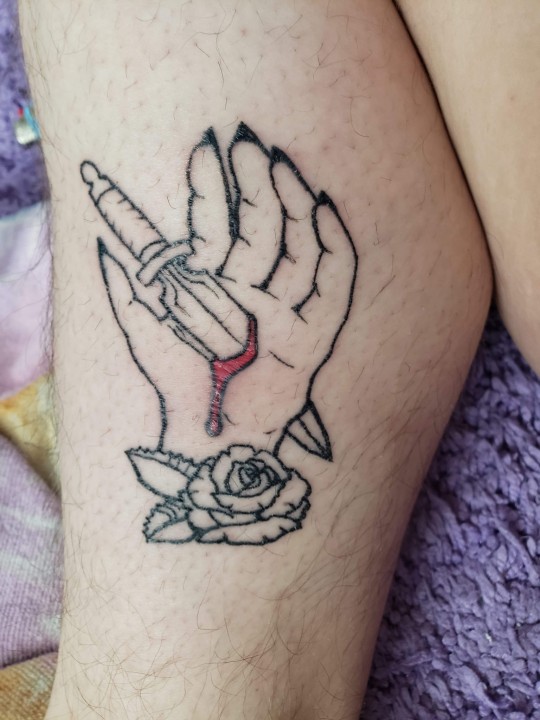
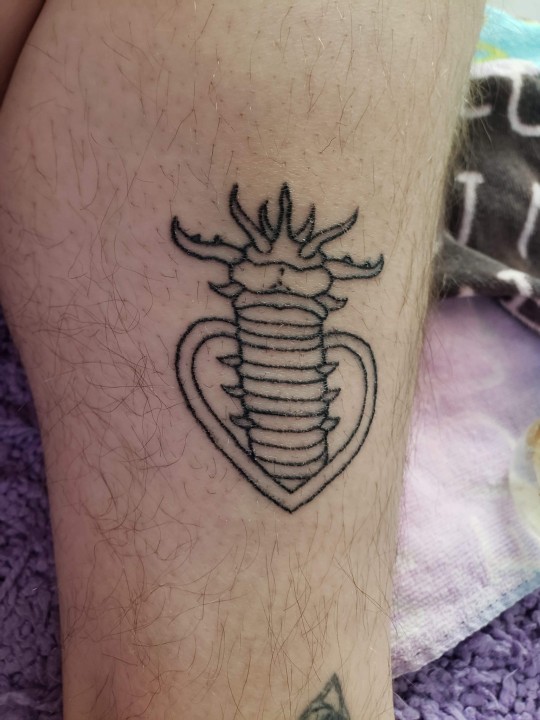
Had the pleasure of tattooing @terminallytwee ! I designed the hand to their specifications, while they designed the Bobbitt Worm !
10 notes
·
View notes
Text

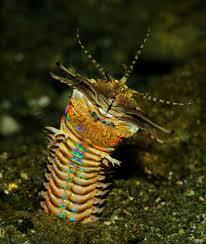
In case you forgot about this nightmare, the bobbit worm grows 9 cm to over 9 feet.

1 note
·
View note